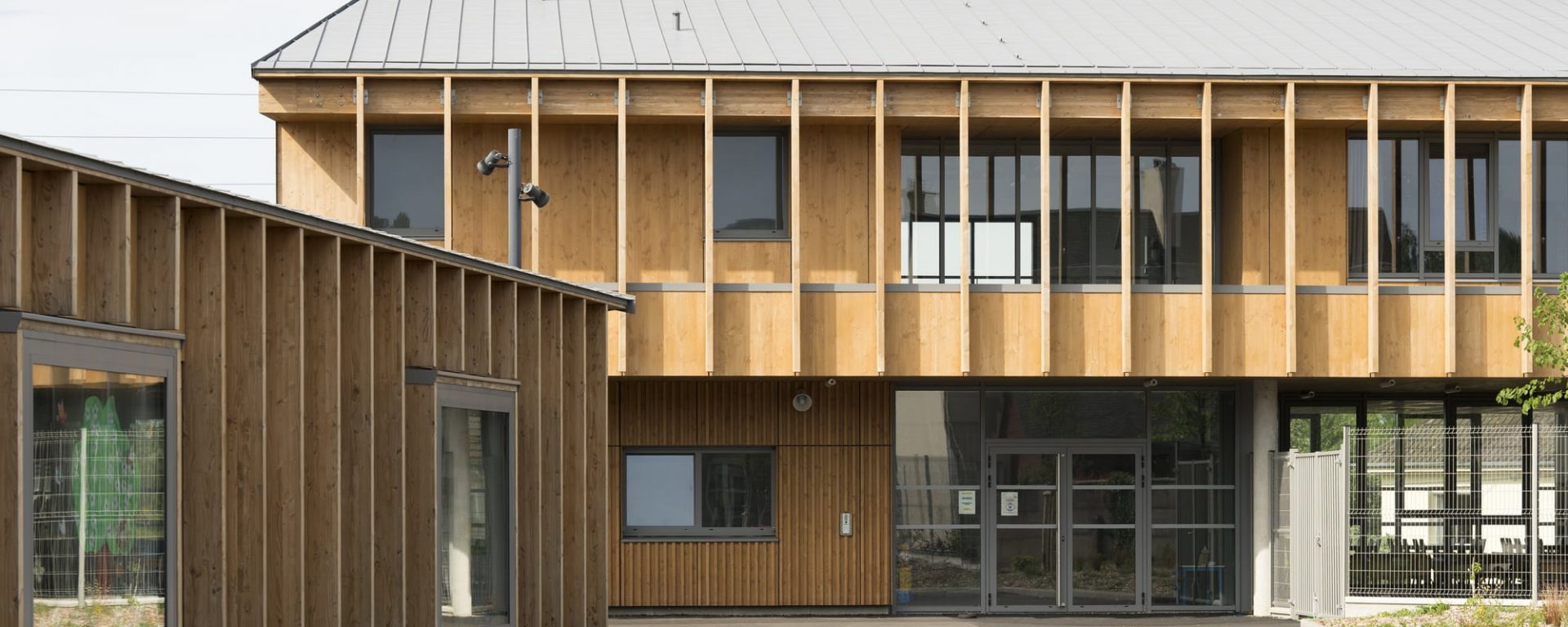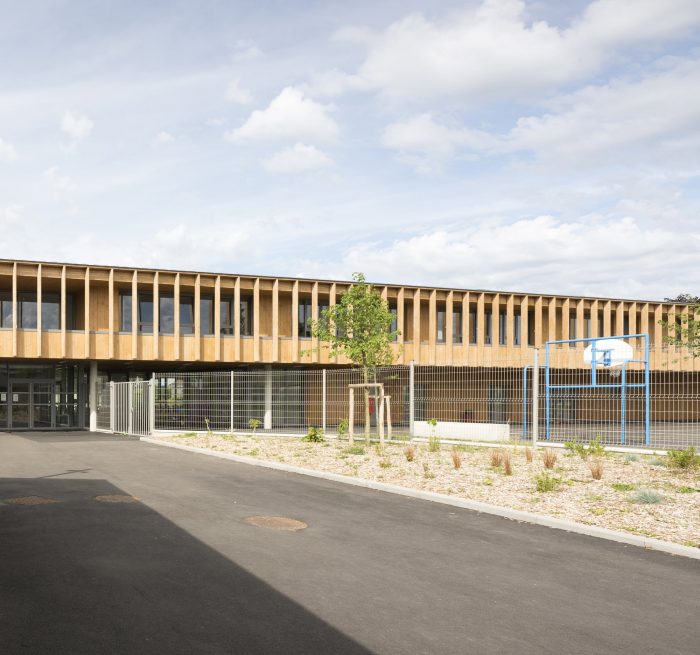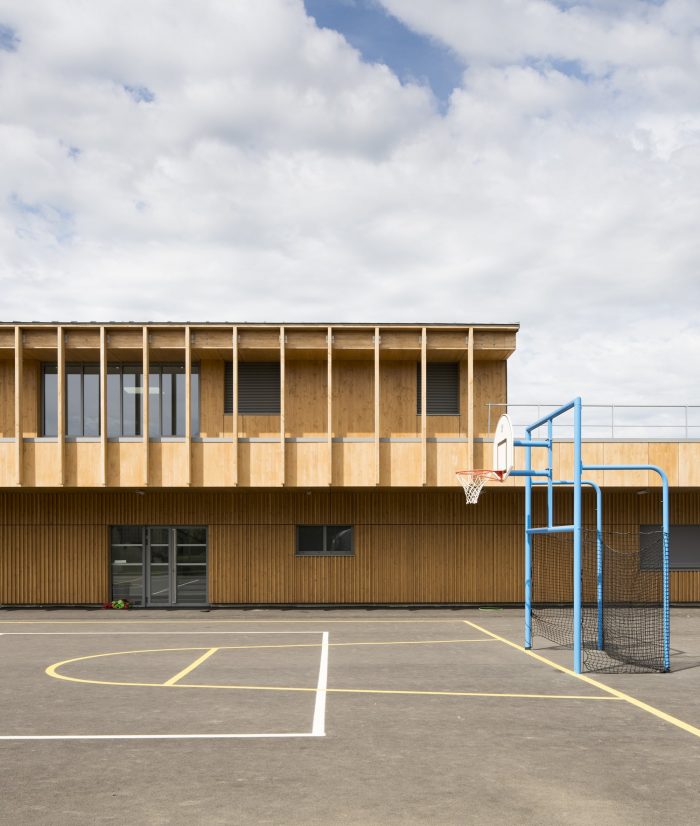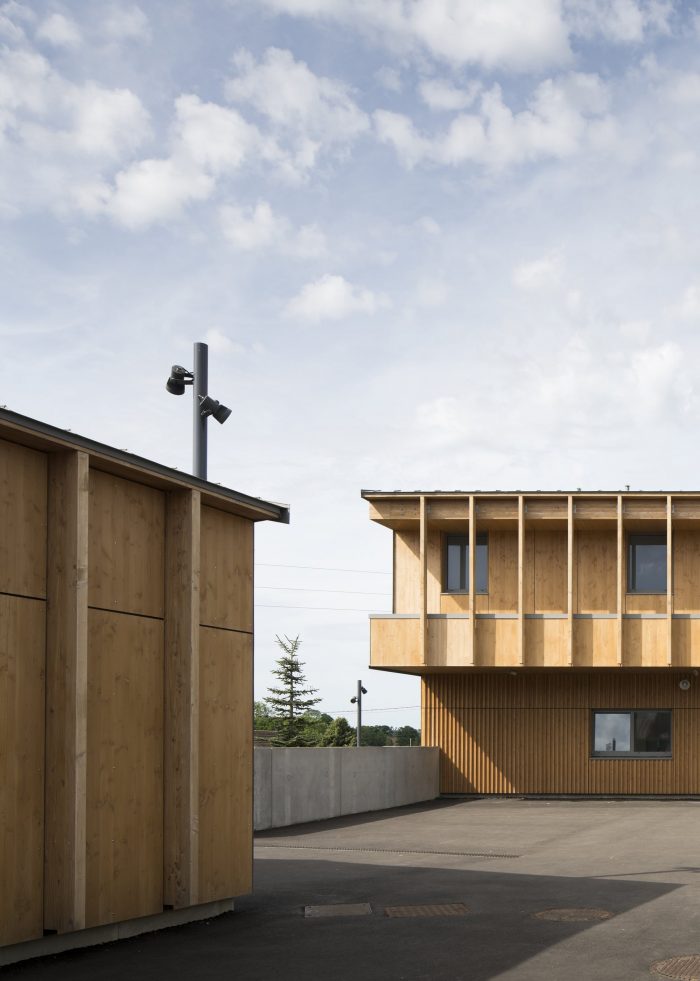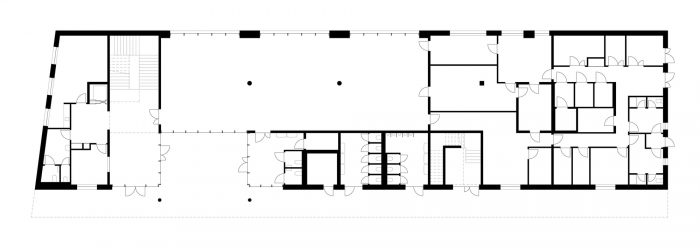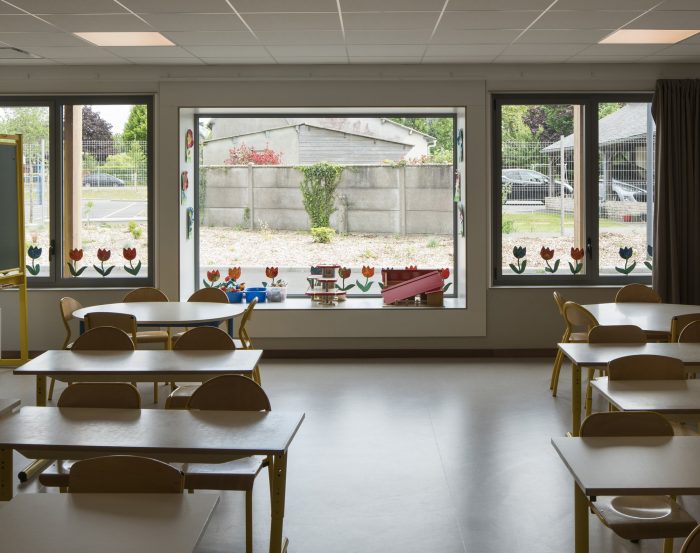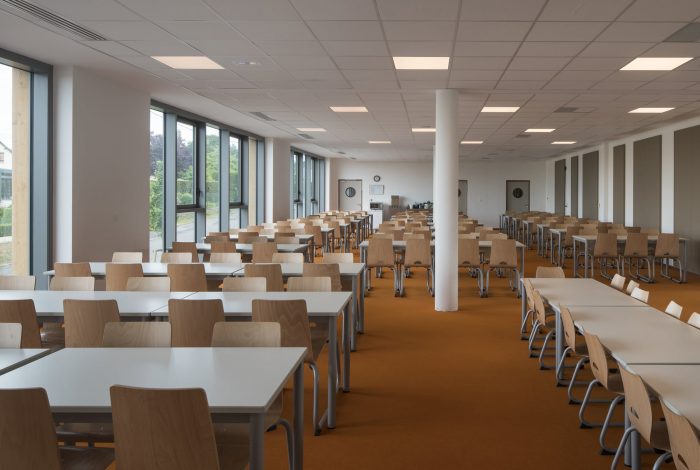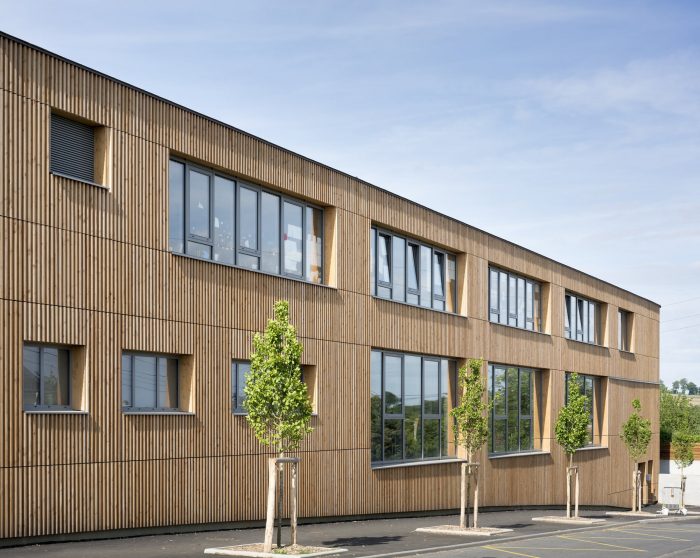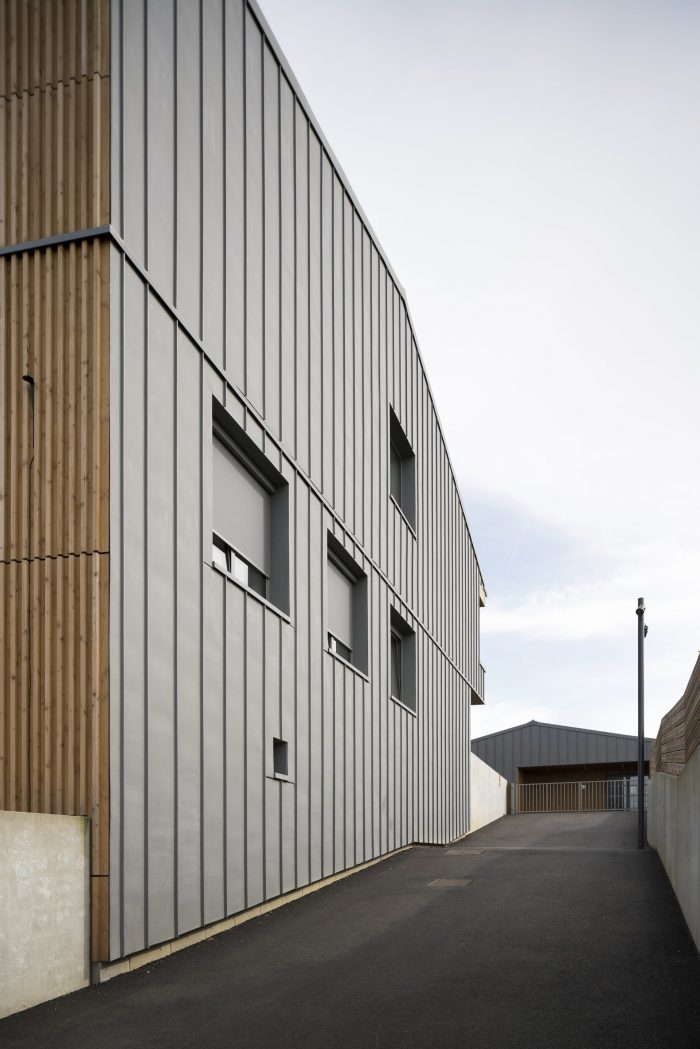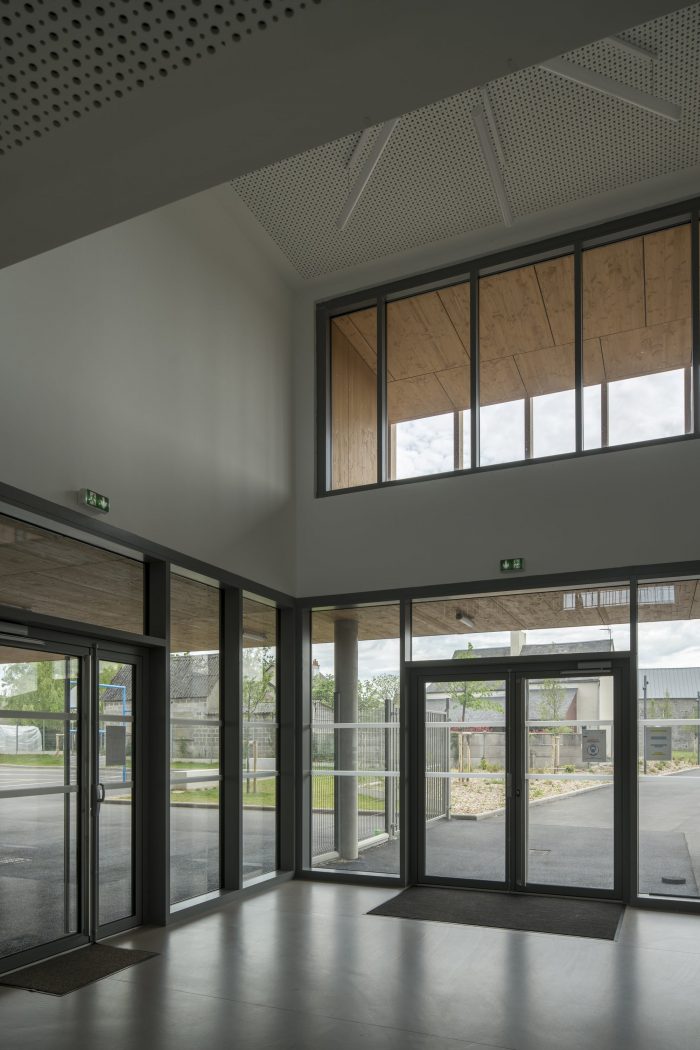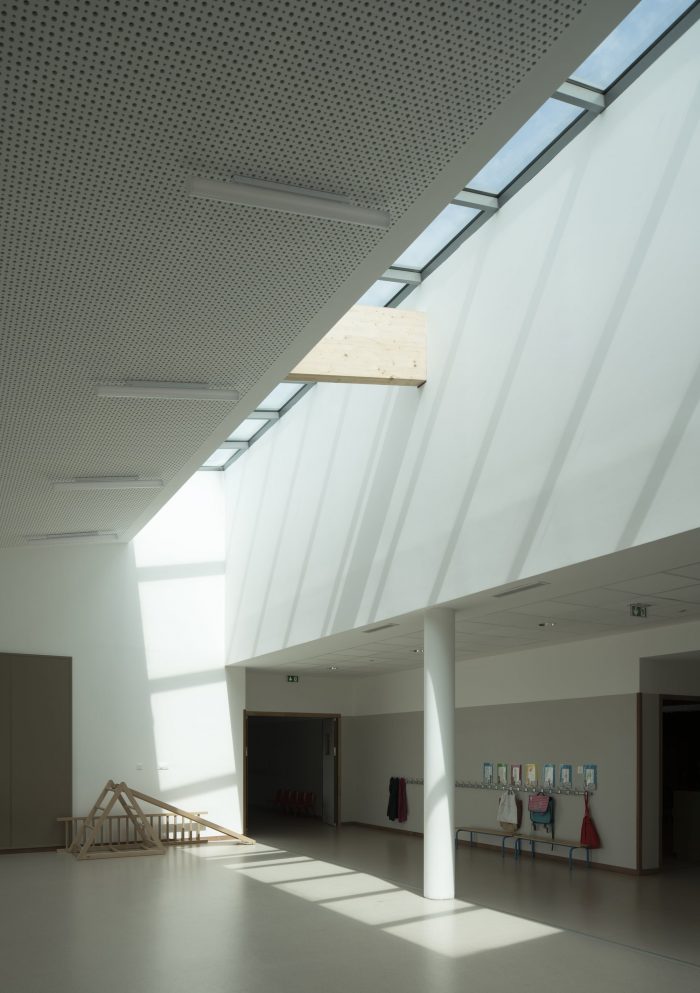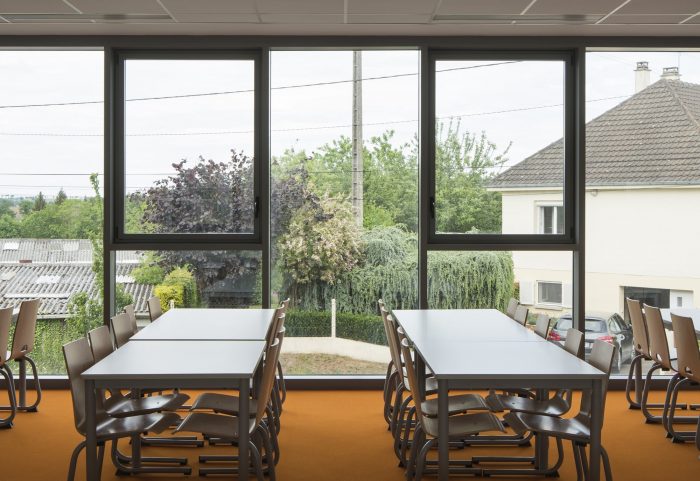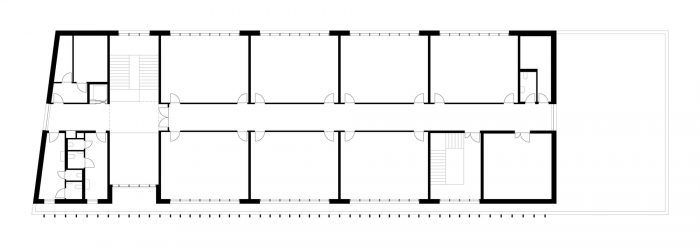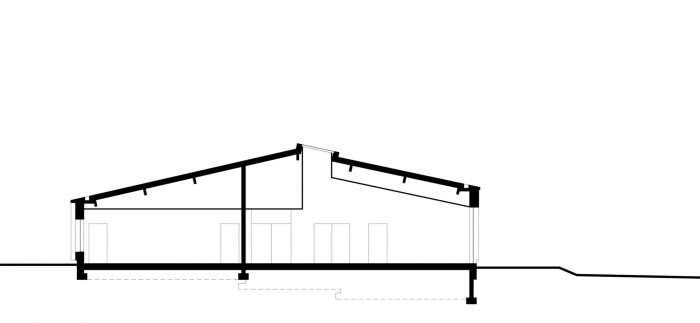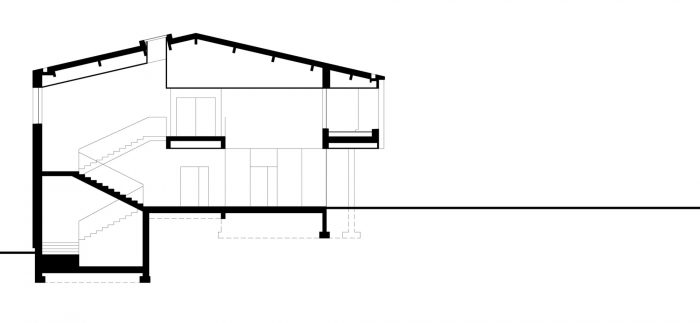该学校综合体位于法国西部诺曼底地区丘陵地带的维索瓦小村。这个新项目旨在取代位于邻近村庄的一些过时的学校,并将其合并为一个实体。
The school complex is situated in the small village of Viessoix in the hills of the Normandy region of western France. The new project was intended to replace and combine into a single entity a number of outdated schools located in adjacent villages.
场地上现有的一栋19世纪的石屋将被翻新并改造成一个小型的学校图书馆。这个最初的项目限制有助于塑造新的幼儿园和小学的适度形式和材料,与图书馆一起被设想为一个互补的 “家庭”。翻修后的图书馆建筑重新覆盖了立缝锌屋顶,并恢复了现有的花岗岩墙壁;两所新学校的外墙采用了垂直木梁和实木板系统,屋顶和檐墙则采用了立缝锌。
An existing gabled stone house on the site, dating from the 19th century, was to be refurbished and transformed into a small school library. This initial program constraint helped to shape both the modest forms and materiality of the new kindergarten and elementary schools, conceived of – along with the library – as a “family” of complementary volumes. The refurbished library building is re-clad with a standing-seam zinc roof, and its existing granite walls are restored; the two new school volumes are covered in a system of vertical timber beams and solid wood panels for the façades, and standing-seam zinc for both the roofs and gable walls.
这三座建筑沿着一条种植的人行 “街道 “组织起来,从北到南穿过狭窄、细长的地块,连接场地一端的市政厅和另一端的学校入口坡道。这条绿色的 “脊柱 “种植了开花的落叶乔木、灌木、野花和草地,到时将连接并统一建筑体量和外部开放空间。
These three buildings organize themselves along a planted pedestrian “street”, which traverses the narrow, elongated plot from north to south, connecting the town hall at one end of the site to the school entry ramp on the other. This green “spine” is planted with flowering deciduous trees, shrubs, wildflowers, and grass, that will -in time – connect and unify the built volumes and the exterior open spaces.
幼儿园是一个单层建筑,包含四个教室(供3至6岁的儿童使用),每个教室都有一个大窗户,面向东边的绿色 “脊柱”。一条宽阔的内部中央走廊,利用屋顶的自然光源照明,将教室与内部游戏区、大厅和午睡室连接起来,还有一个大型的受保护的室外游戏空间,可以看到西边相邻的农村景观的起伏山丘。
The kindergarten is a single-story volume containing four classrooms (for children aged between 3 to 6), each with a large window flanking the green “spine” to the east. A wide interior central corridor, lit with natural light sources on the roof, links the classrooms to an internal play area, hall, and nap room, as well as a large protected outdoor play space with a view of the rolling hills of the adjacent rural landscape to the west.
小学是这个家庭中的 “长子”,是一个两层的结构,由上层的七个教室(供12岁以下的儿童使用)组成,这些教室叠加在厨房和一个120个座位的大食堂空间之上,并在底层设有行政办公室。与幼儿园一样,内部空间采用高吸声穿孔石膏板和瓷砖天花板,并铺设了吸声油毡和高密度地毯。 沿着地面南侧立面的长度有一个有顶的游戏区,与一个大型封闭的室外游乐场相邻。
The elementary school, the “eldest” in the family, is a two-story structure consisting of seven classrooms (for children up to age 12) on the upper level, which are stacked above a kitchen and a large 120-seat cafeteria space and administrative offices on the ground level. As in the kindergarten, interior spaces are finished in high-absorption perforated acoustic plasterboard and tile ceilings, with acoustic linoleum and high-density carpet flooring. A covered play area along the length of the south façade at the ground level adjoins a large enclosed outdoor playground.
客户提出的1600欧元/平方米的极其有限的预算限制,使我们的设计团队选择了简化的建筑体量、混合砌体-混凝土-木结构系统,并选择了简朴、易于维护的外部和内部装饰。关于环境和可持续性问题,客户与设计团队合作,建立了一系列的基准目标。为了最大限度地重新利用 “已经存在 “的东西,现有的将被关闭的学校的教室家具被重新利用到幼儿园和小学的教室以及食堂。
The constraint of an extremely limited budget imposed by the client of 1 600€/m2 oriented our design team towards the choices of simplified building volumes, hybrid masonry-concrete-wood frame construction systems, and the choice of humble, easy-to-maintain exterior and interior finishes. With respect to environmental and sustainability issues, the client, in collaboration with the design team, established a series of benchmark objectives. With the aim of maximizing the re-use of the “already there”, the classroom furniture of the existing schools slated for closure was repurposed in the kindergarten and elementary school classrooms, as well as the cafeteria.
另一个目标是建造一个没有认证的同等的低能耗建筑。其他目标包括重新使用挖掘出来的材料,使用生态材料,优化运营成本,以及建立一个 “良性 “的施工现场。对我们来说,这个项目被认为是一个简单、适度和节俭的建筑,在人工和形式姿态方面受到限制,能够为其所在地和周围地区带来新的规模和身份。
Another aim was the construction of an equivalent low-energy consumption building without certification. Other objectives included the re-use of excavated material, use of eco-materials, optimization of operating costs, and a “virtuous” construction site. For us, this project was conceived as a simple, modest, and frugal architecture, limited in artifice and formal gesture, capable of bringing a new scale and identity to its site and its surrounding territory.
Architects: G+ architectes – Paul Gresham – Michael Neri
Area : 2370 m²
Year : 2021
Photographs :Nicolas Borel
Manufacturers : Binderholz, VM Z
Structural Engineer : BETOM Ingenierie
Sustainability Consultants : Cap Terre
Acoustic Engineering : Altia acoustique
Principal Architect : Paul Gresham
Project Architects : Michael Neri, Ronan Le Gac
City : Valdallière
Country : France

